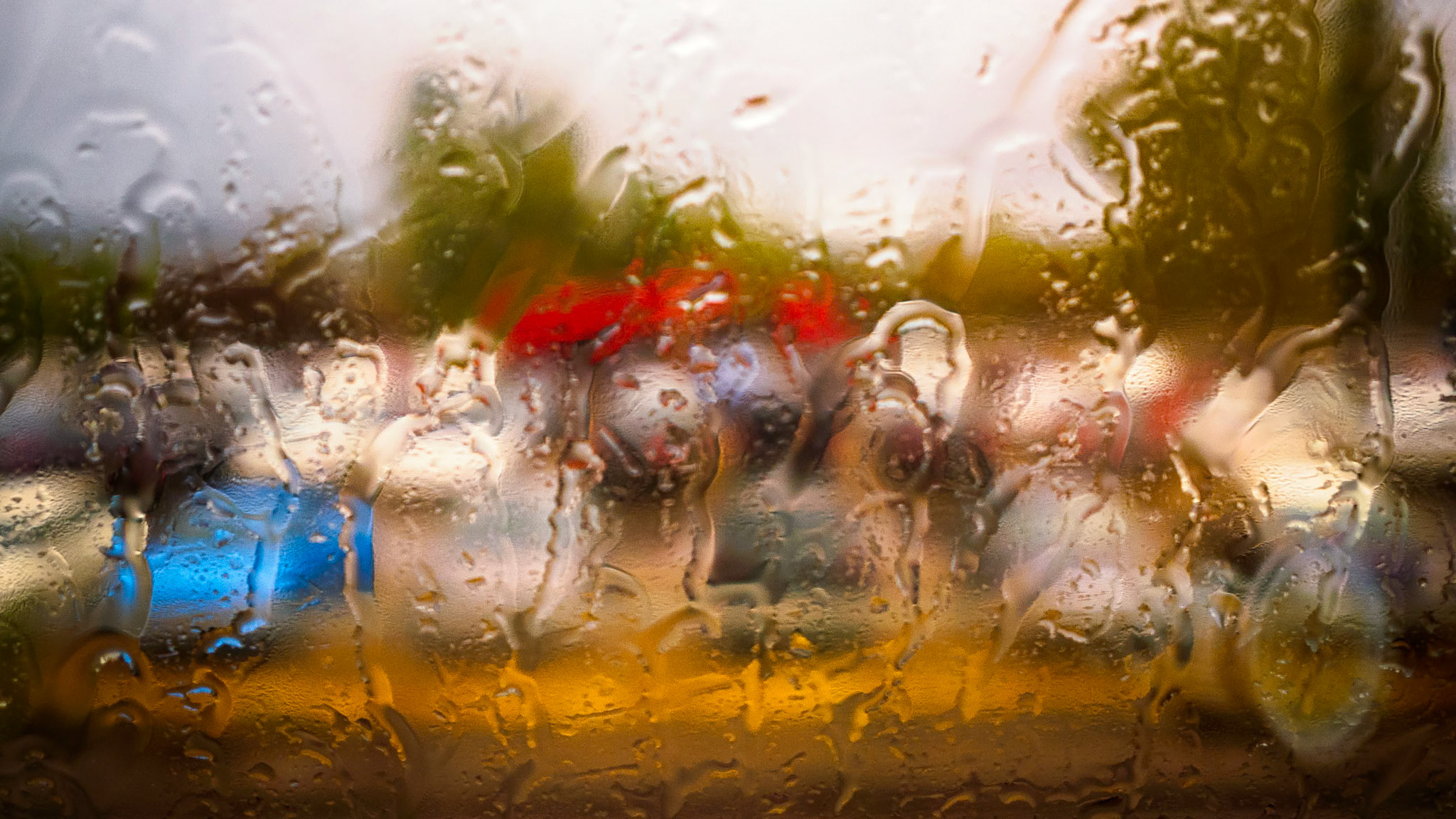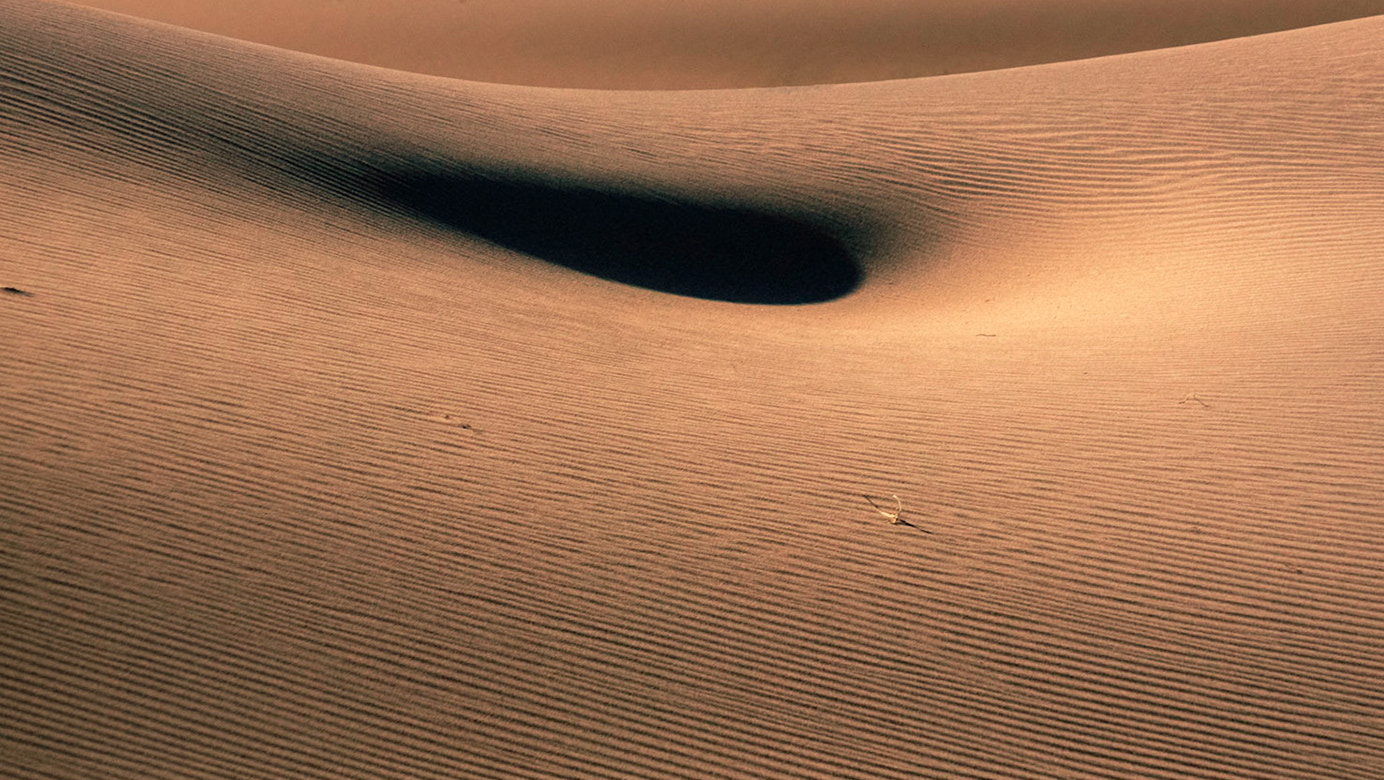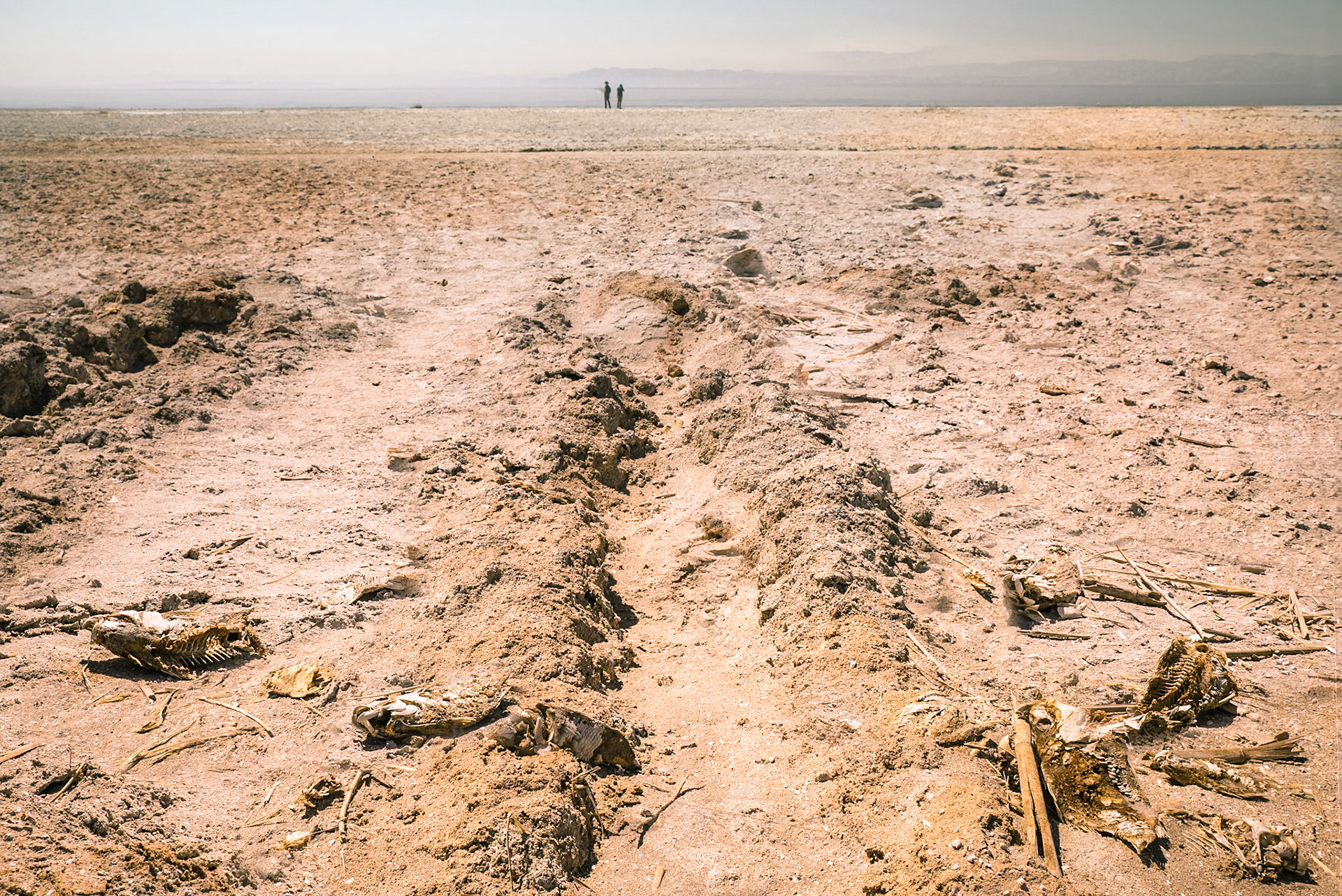
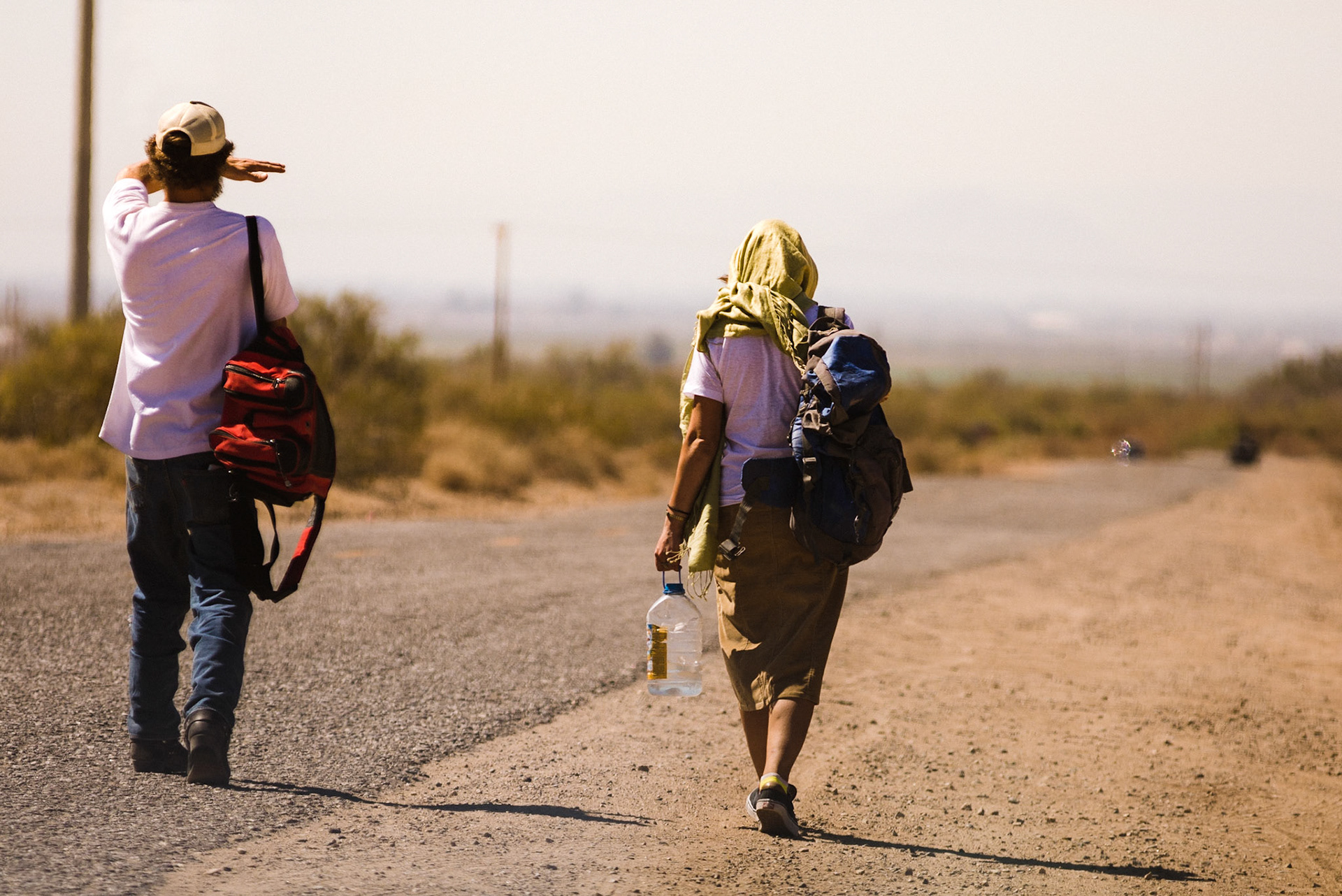
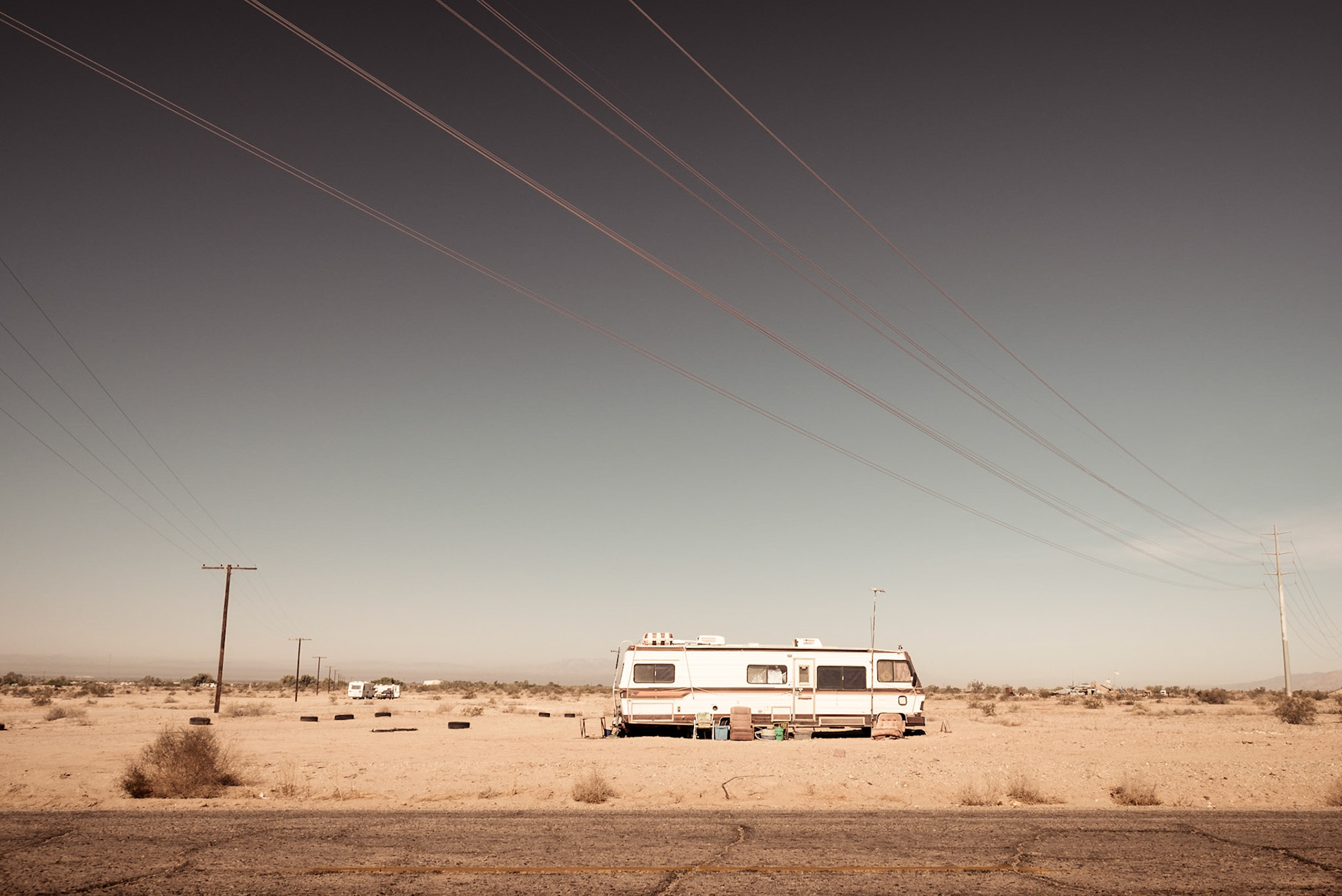
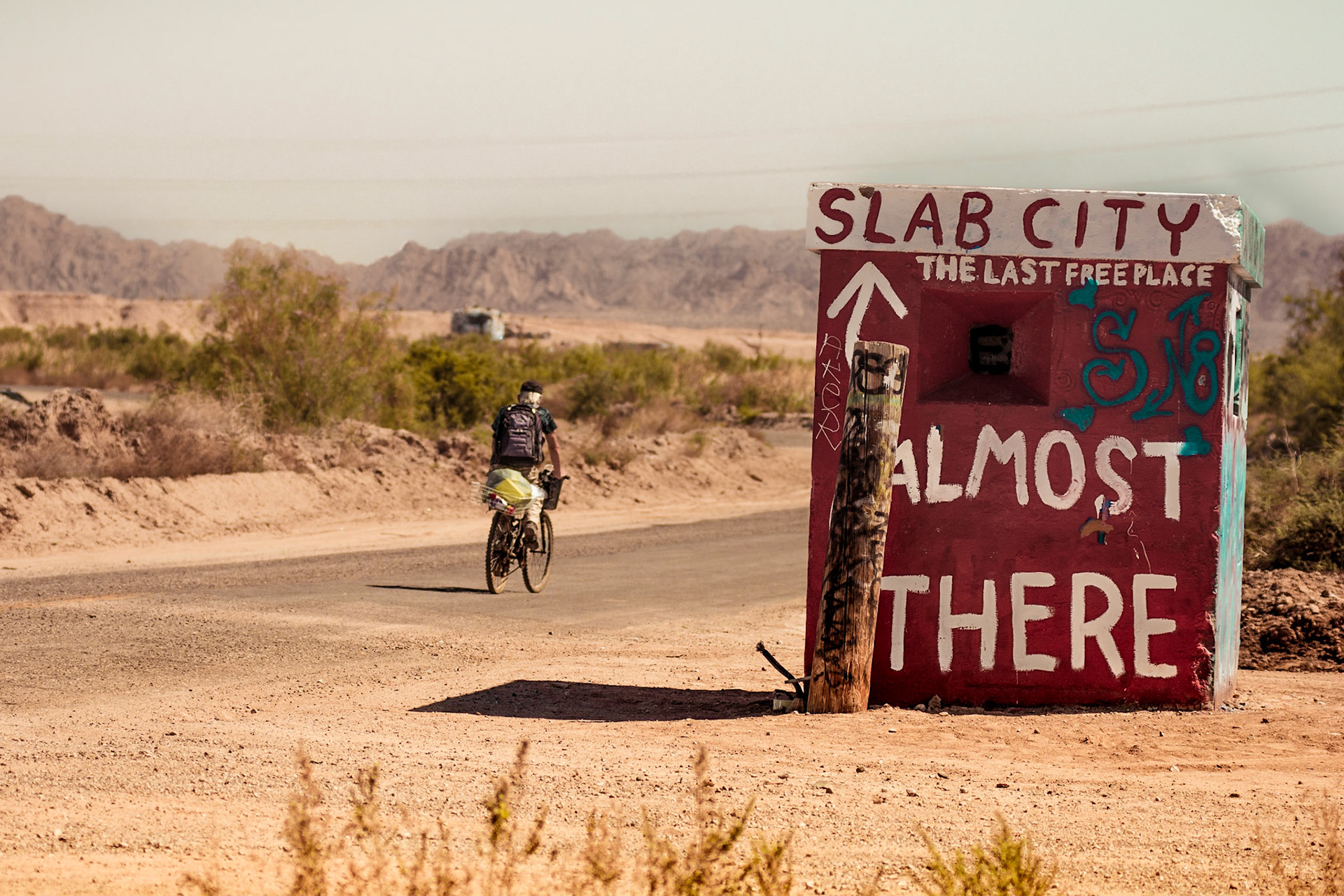
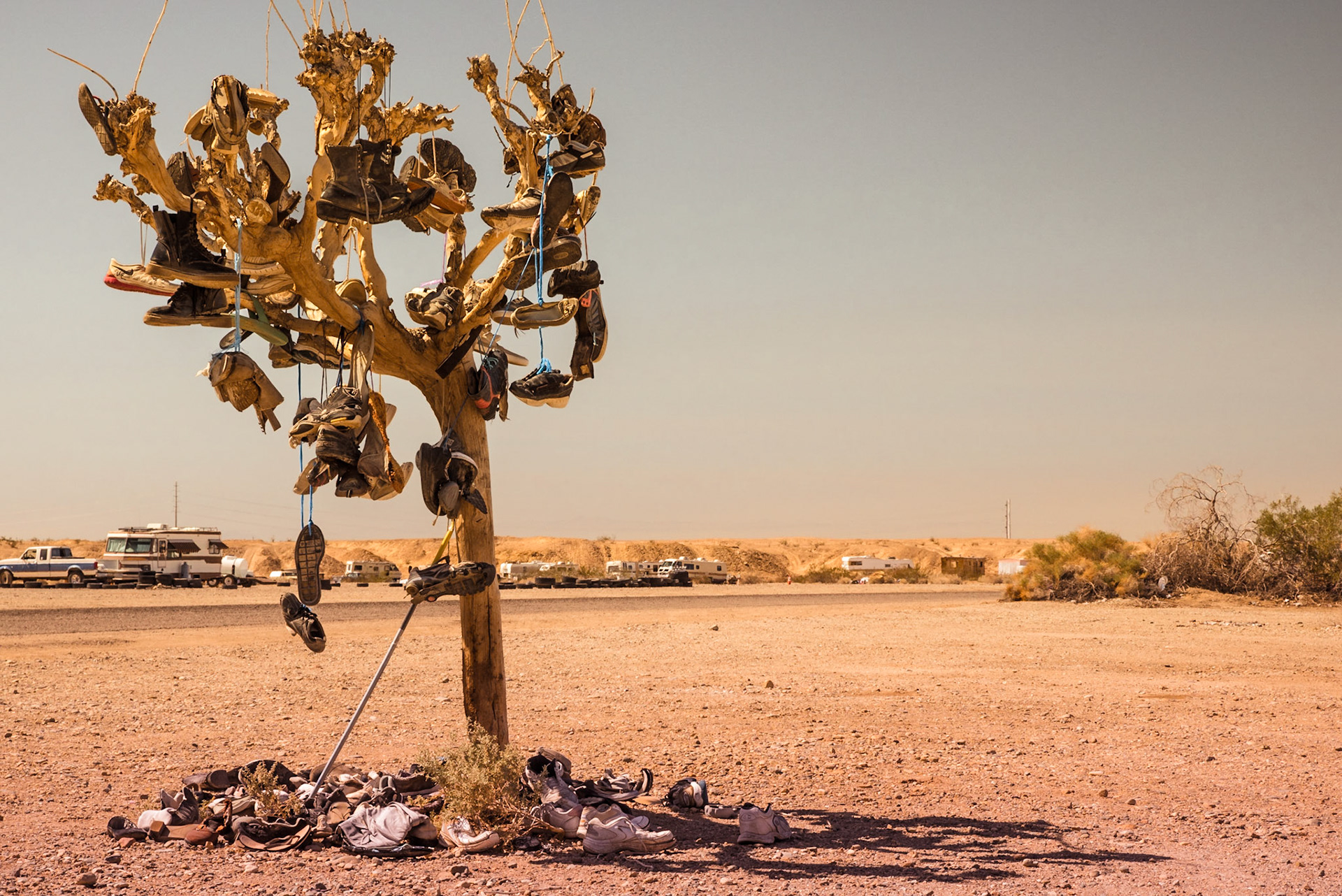
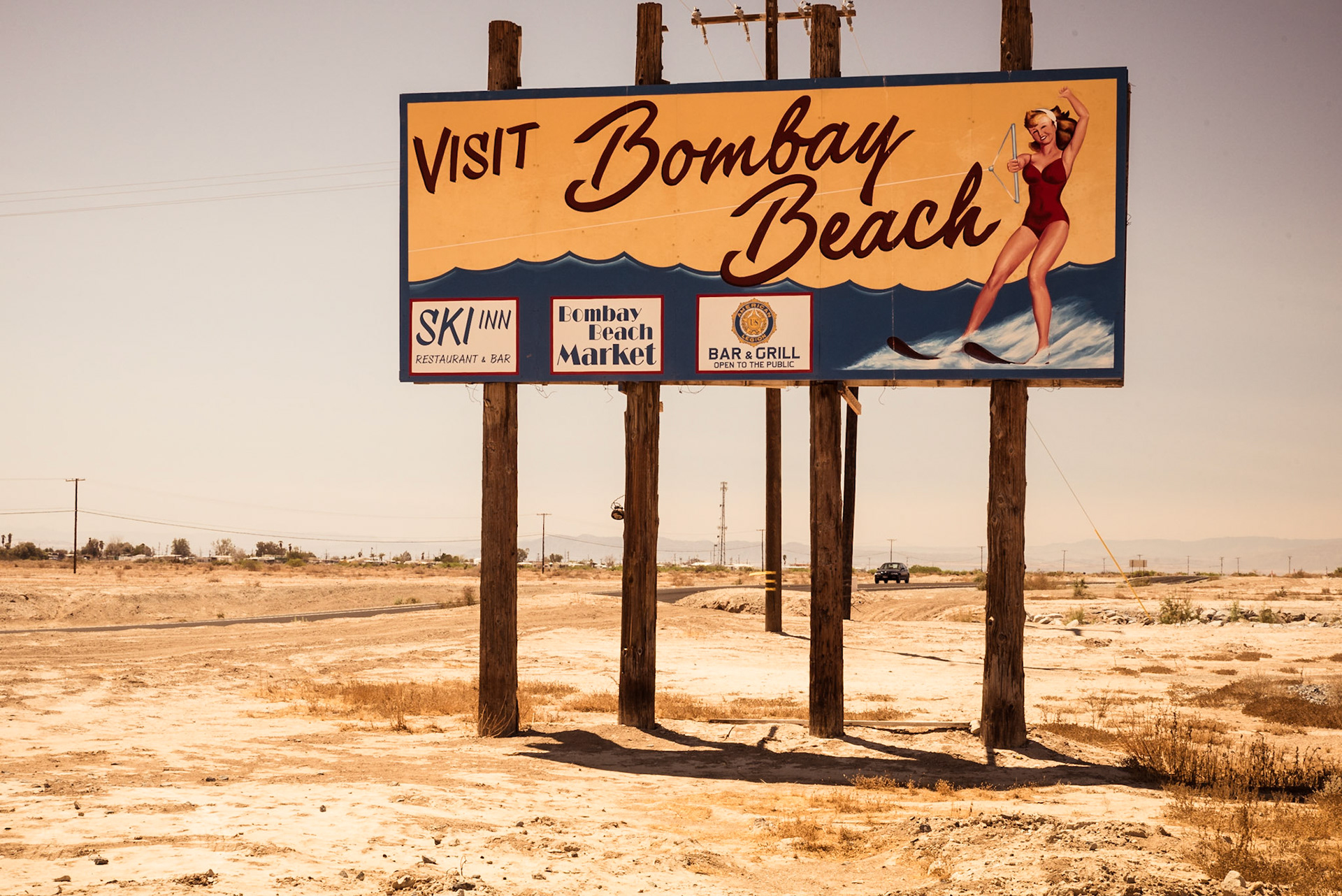
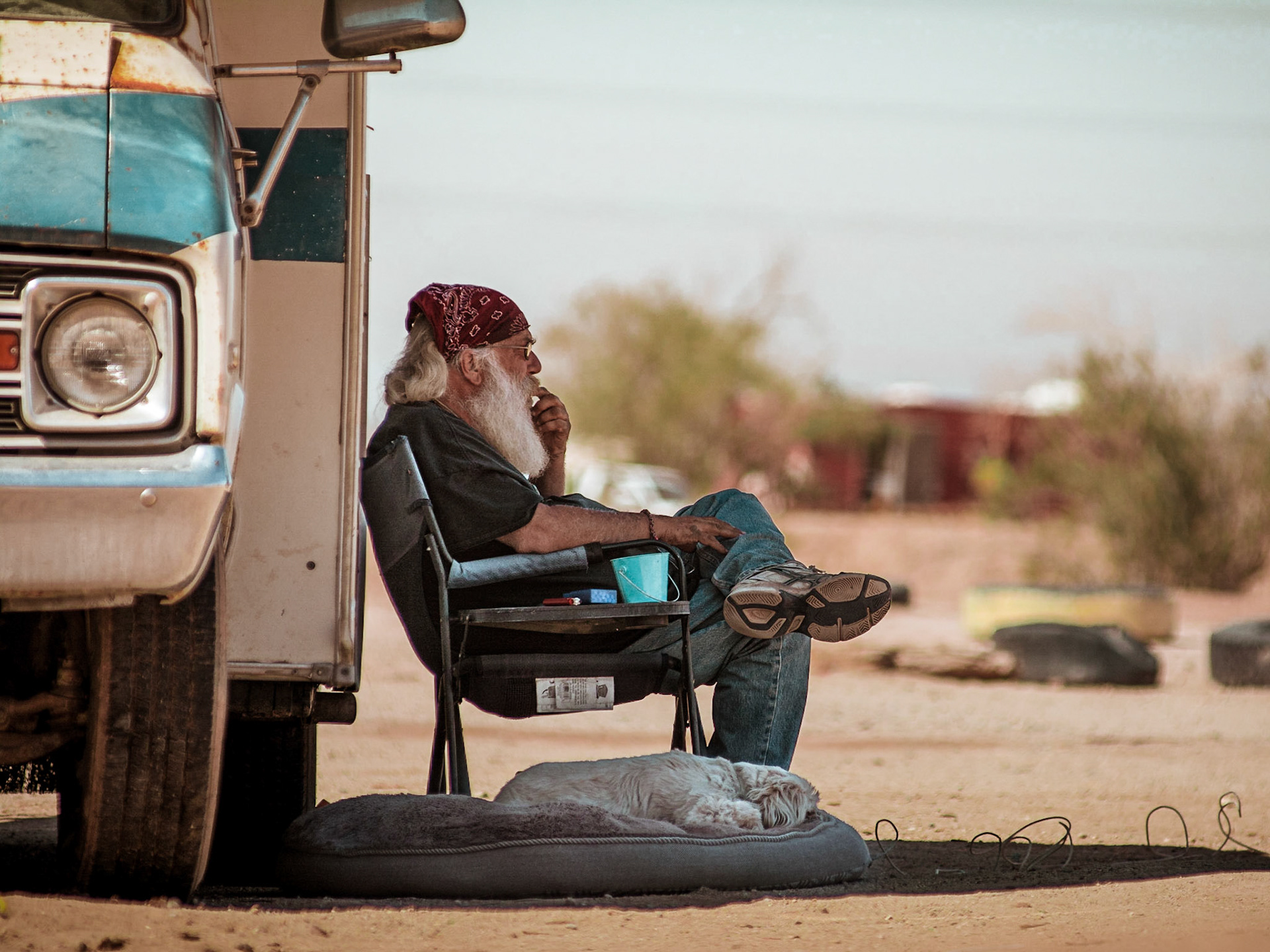
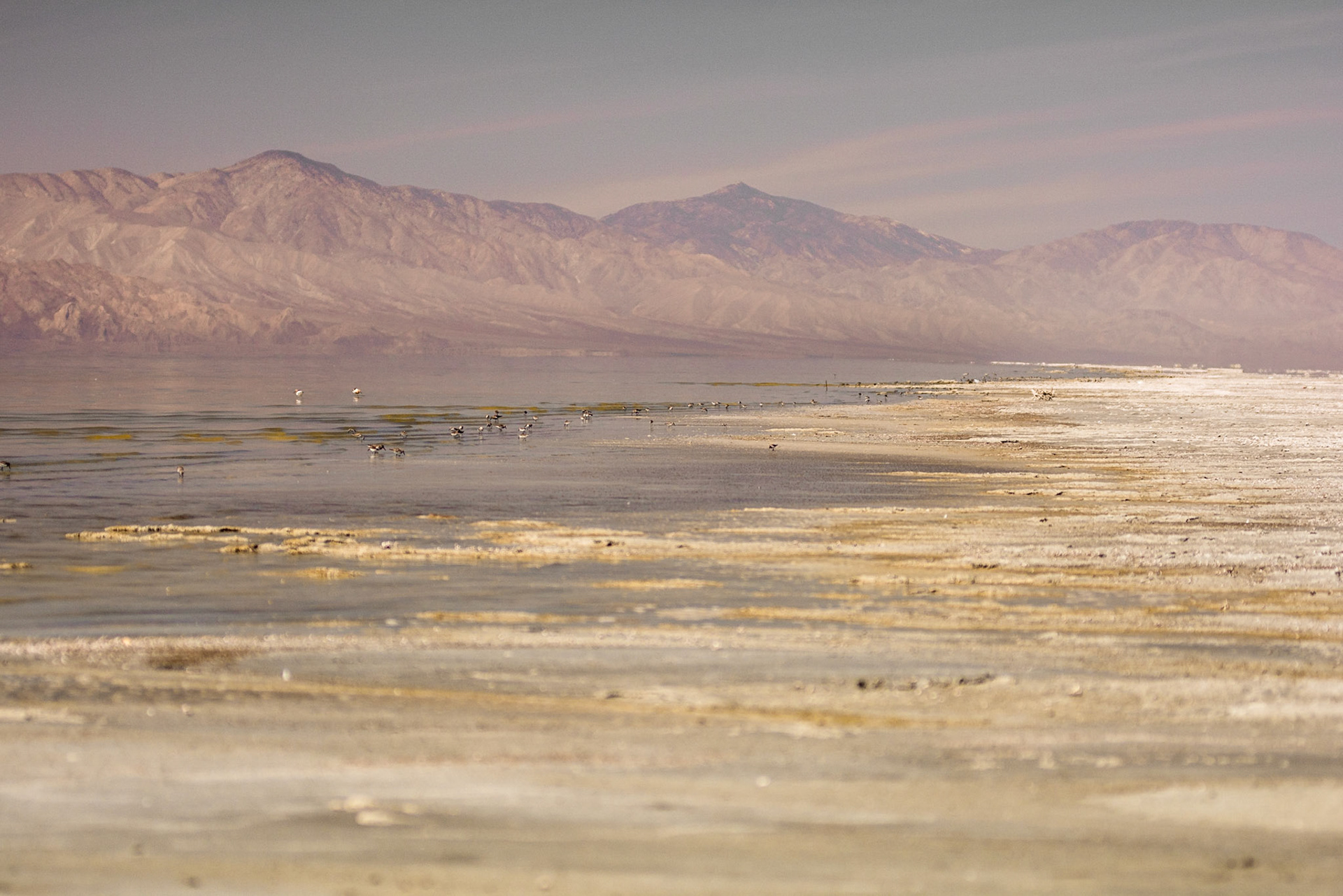
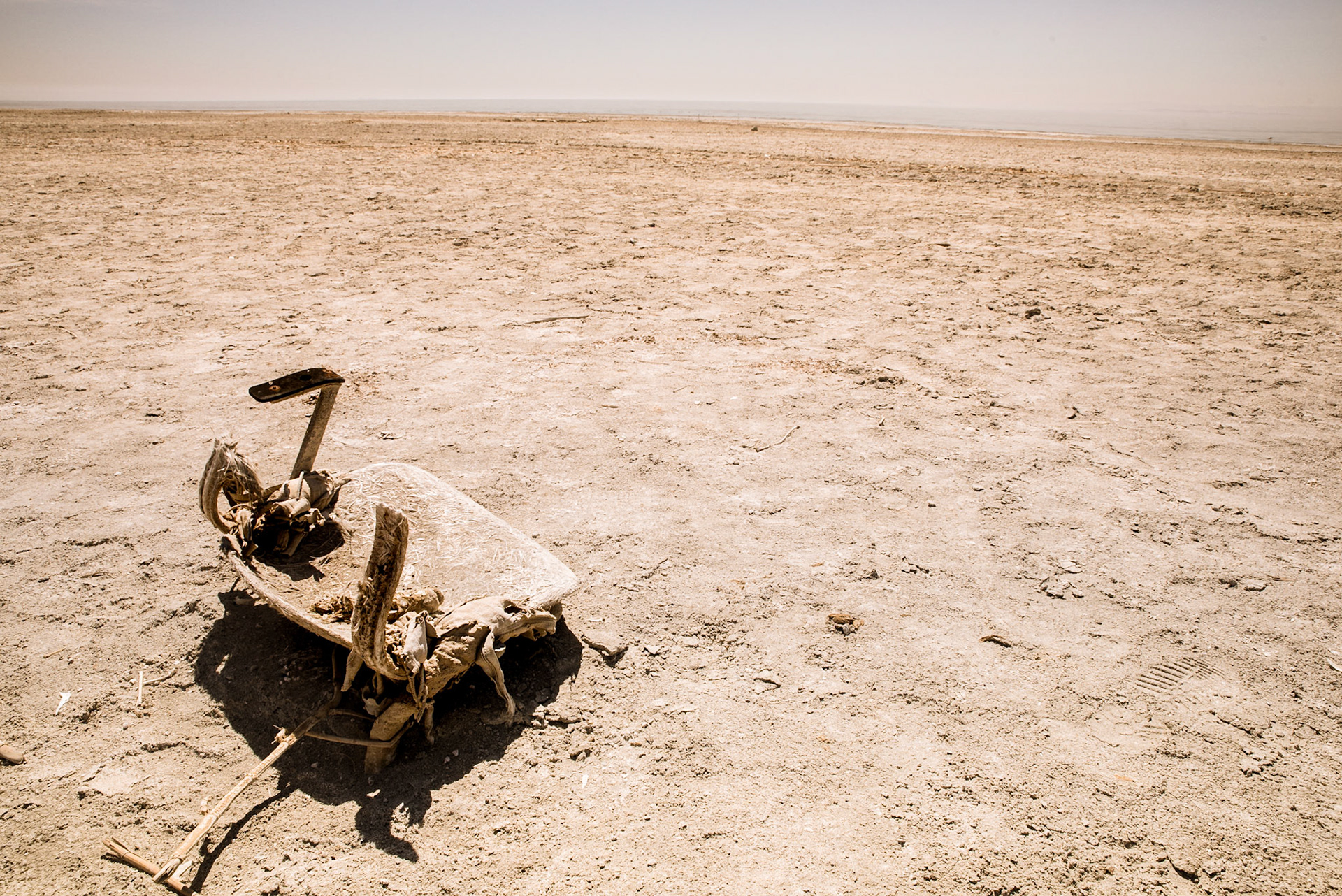
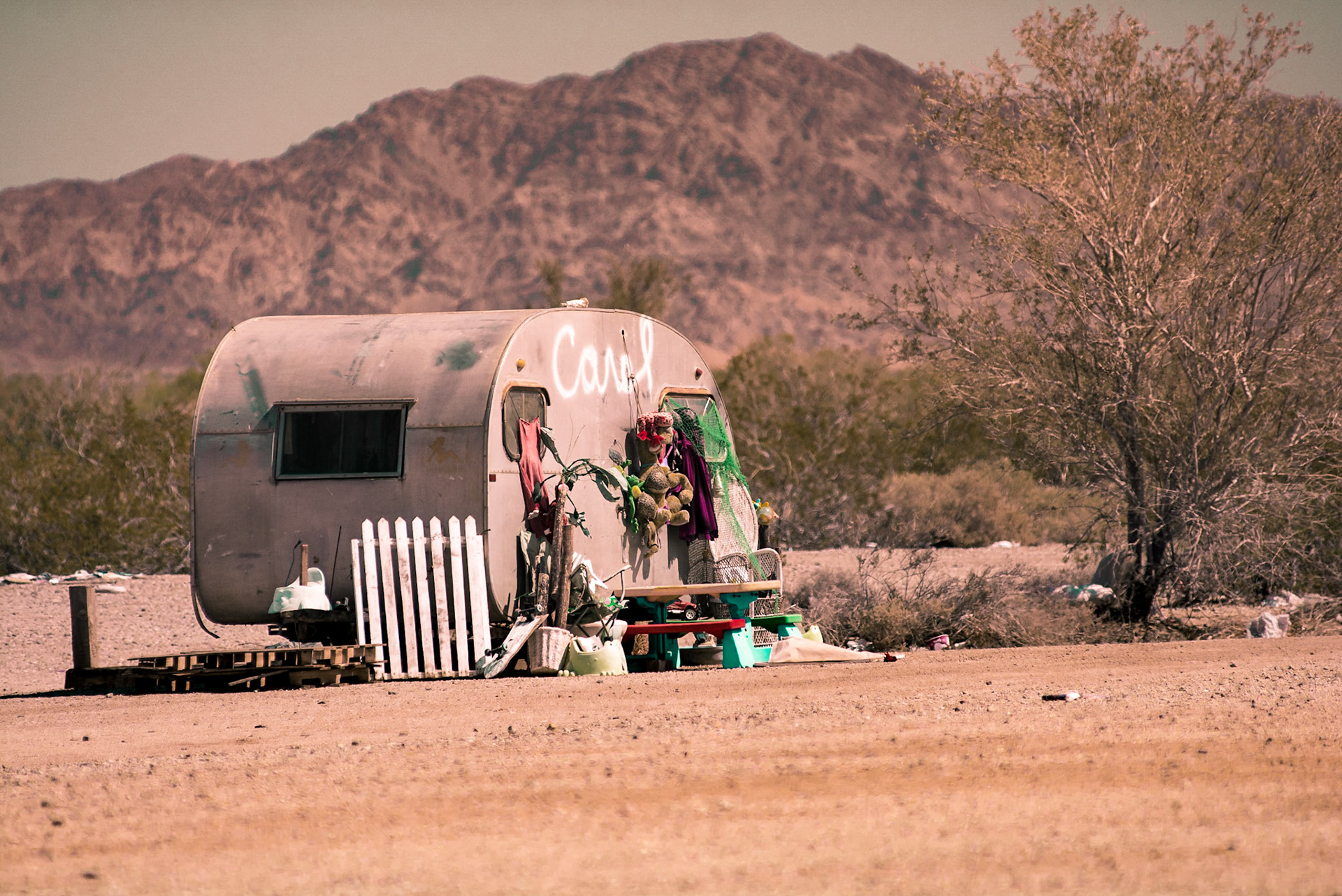
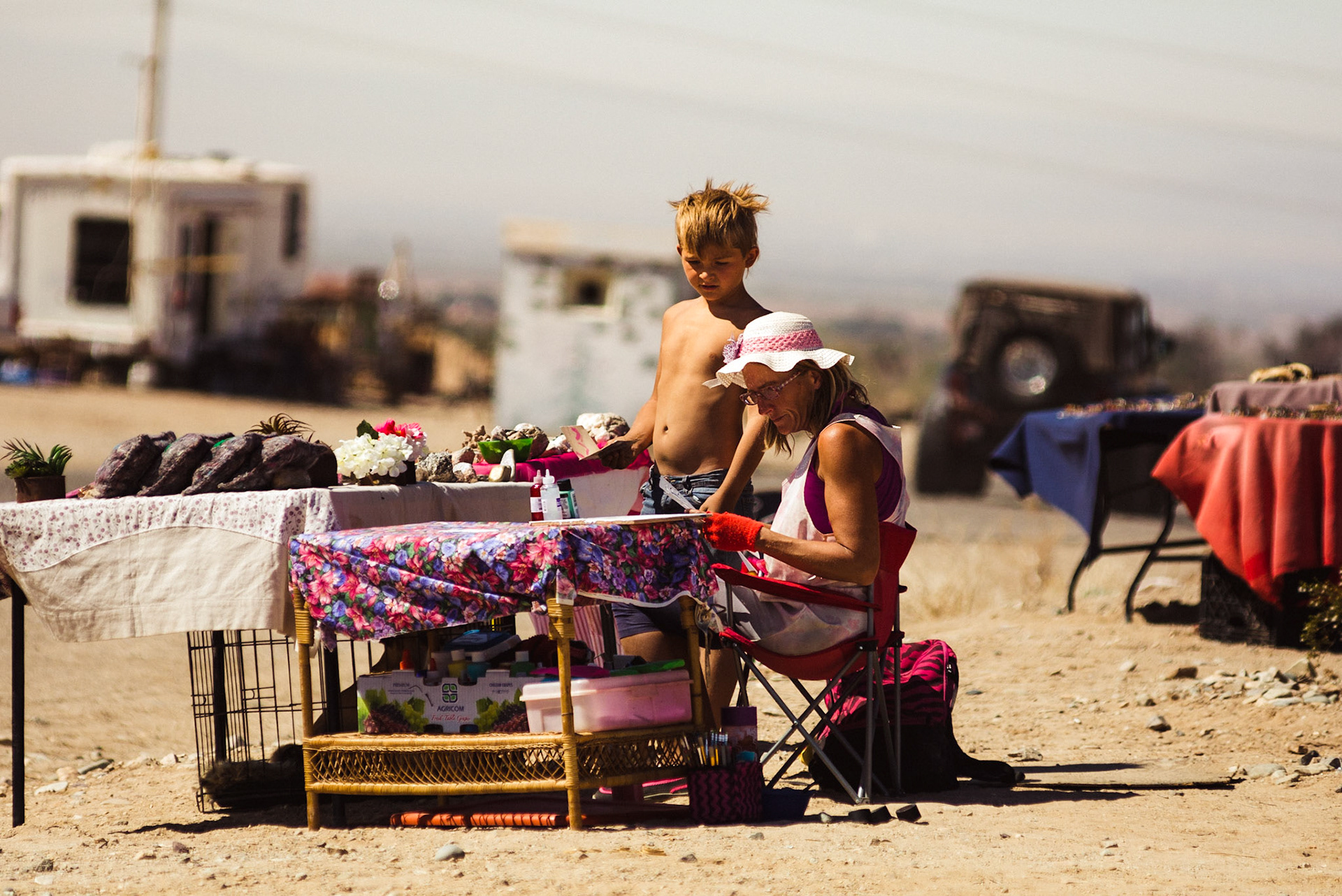
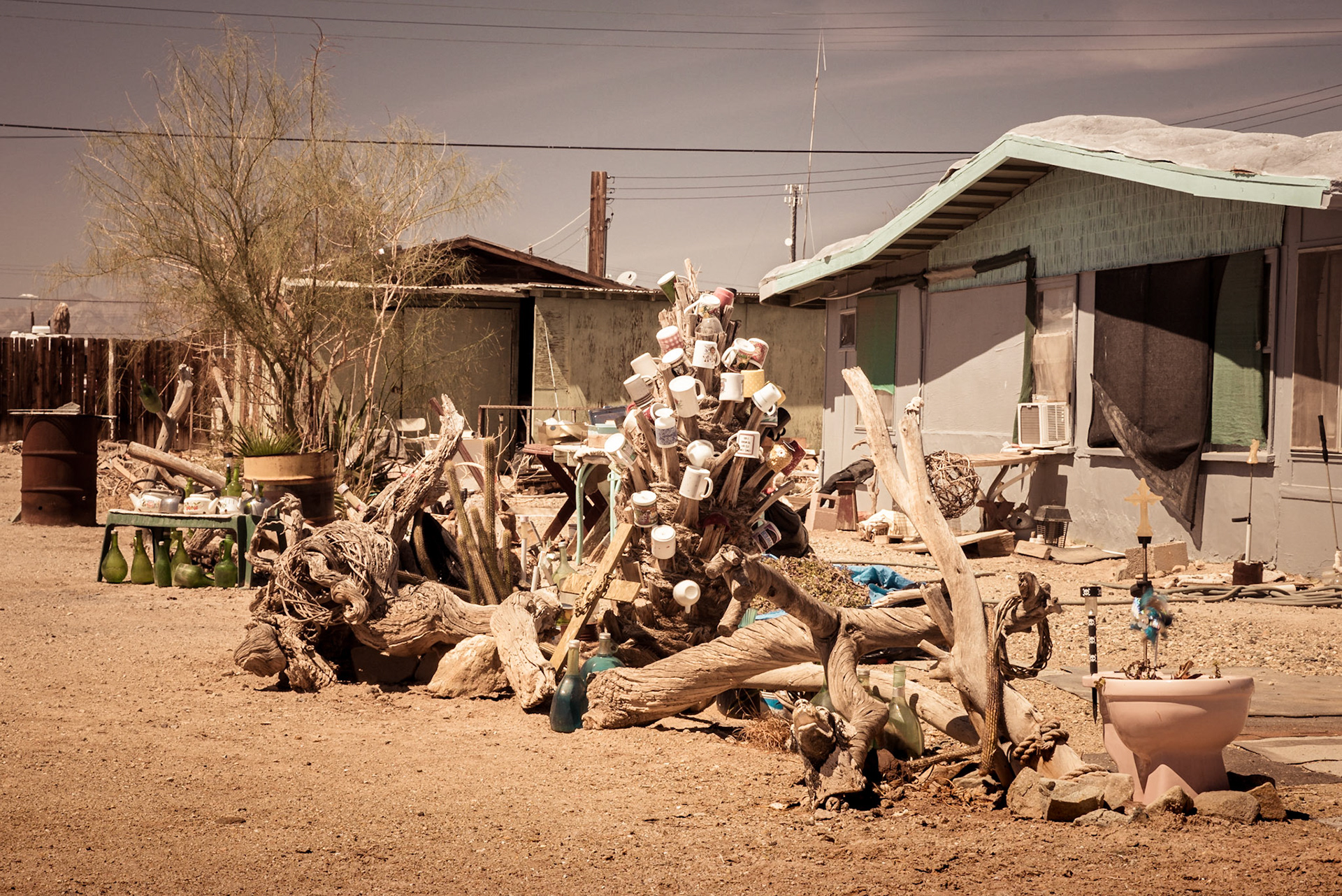
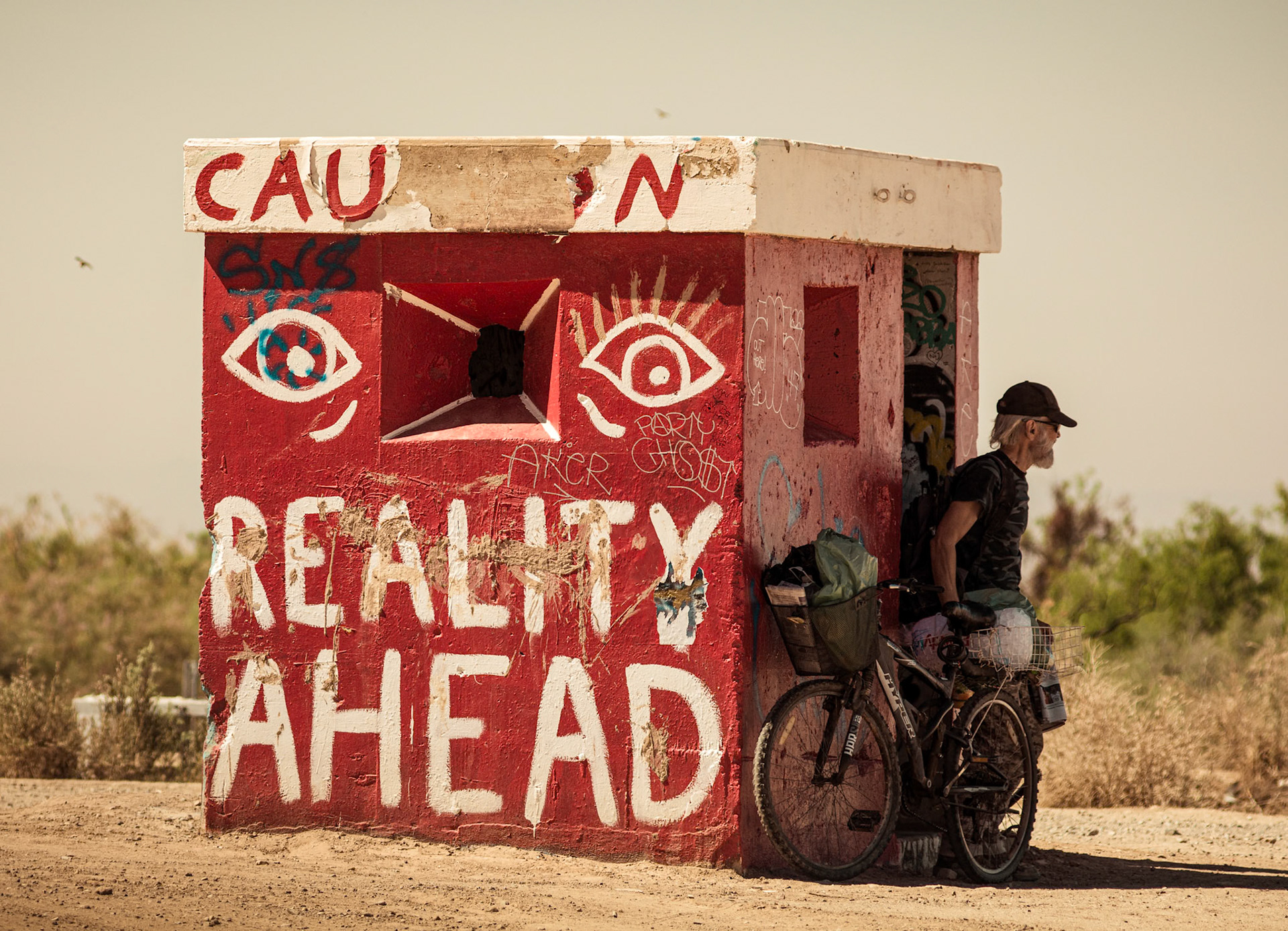
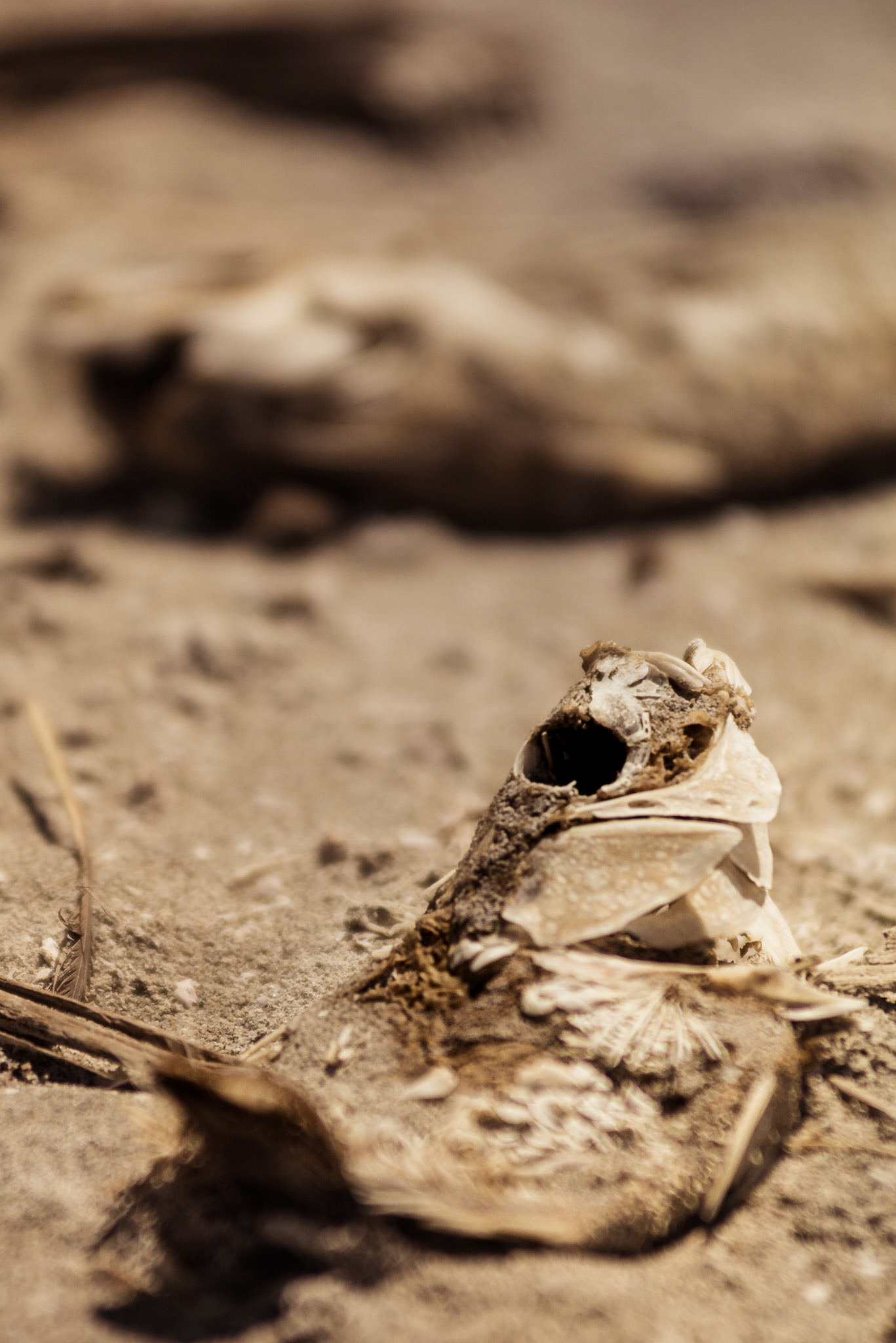
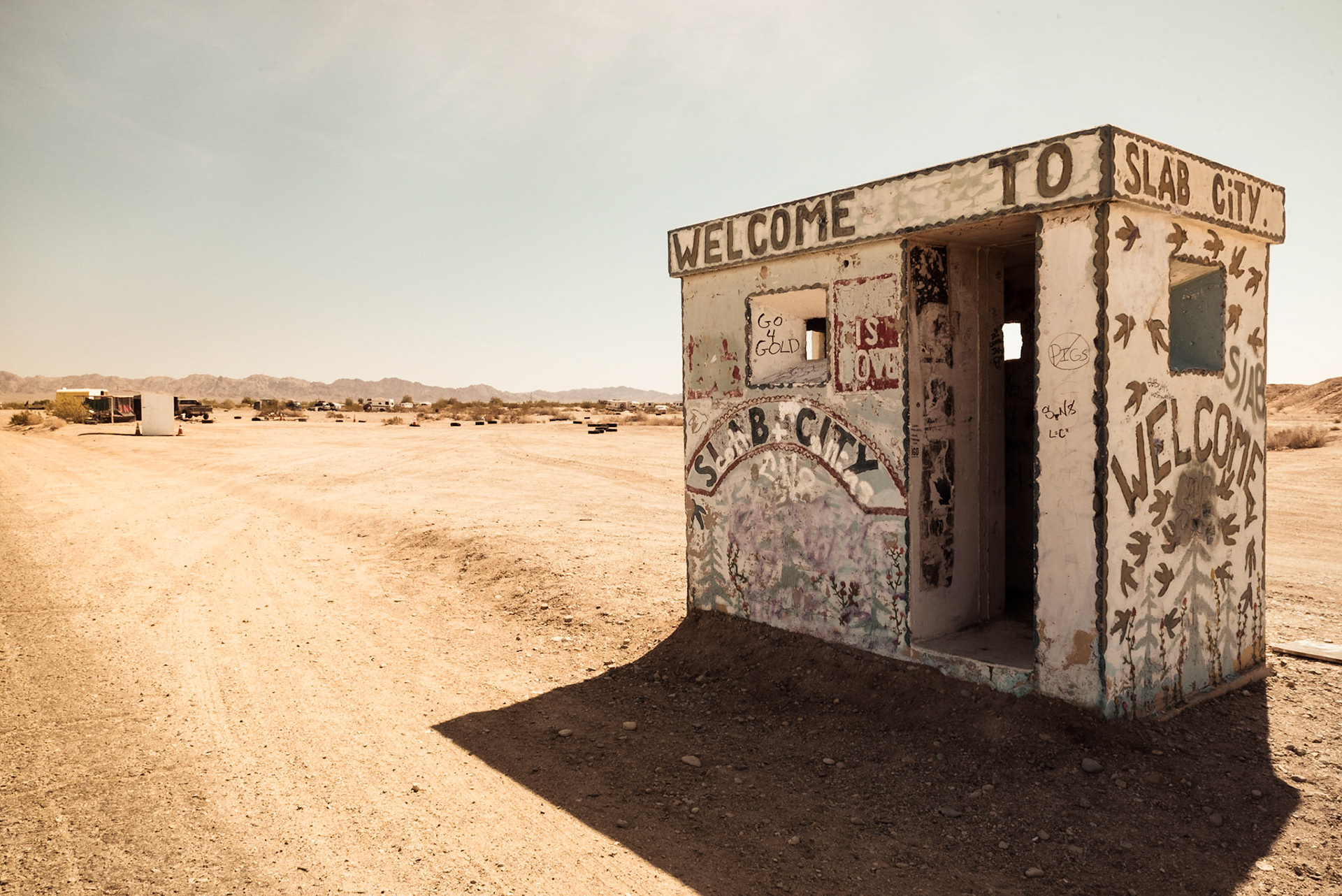
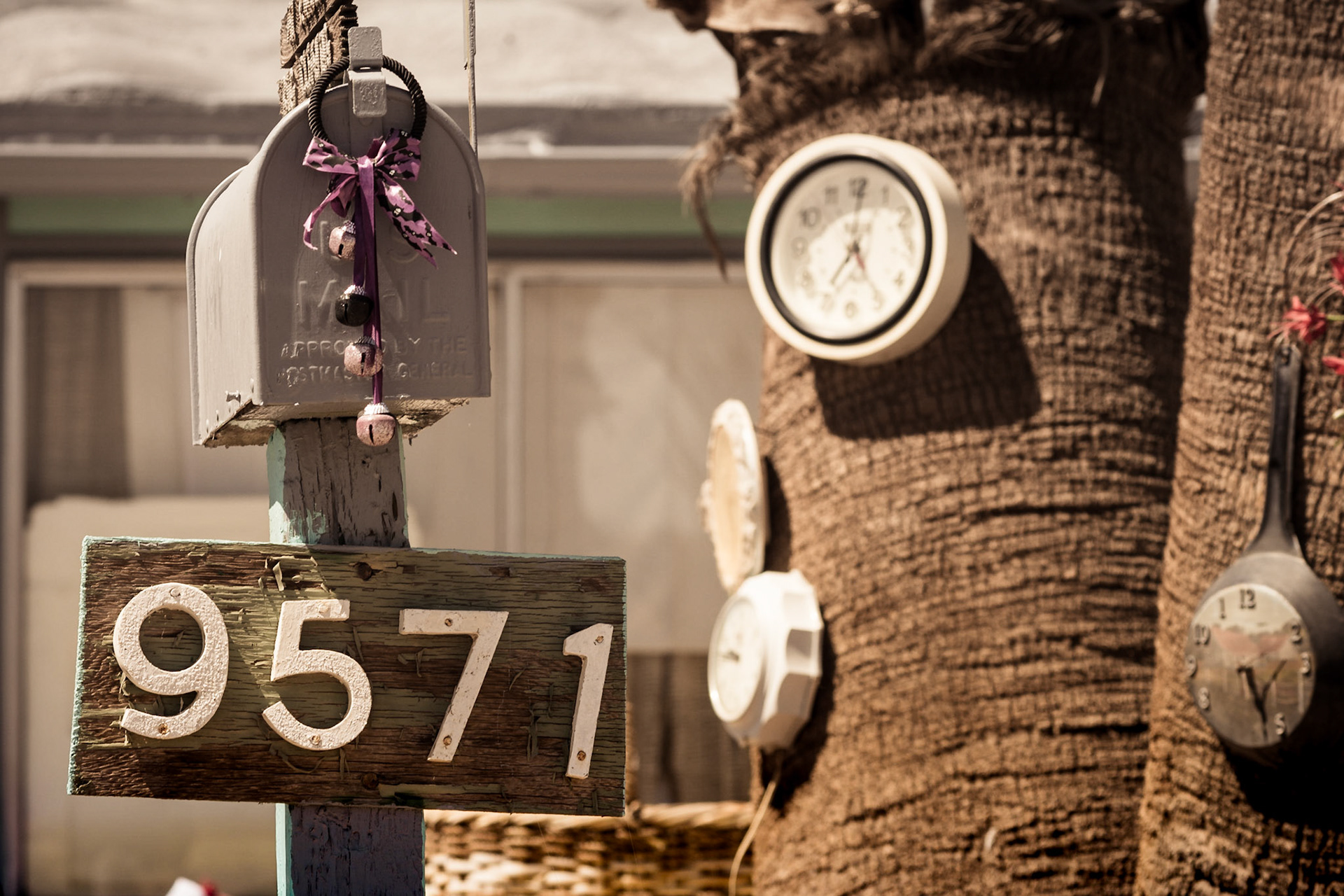
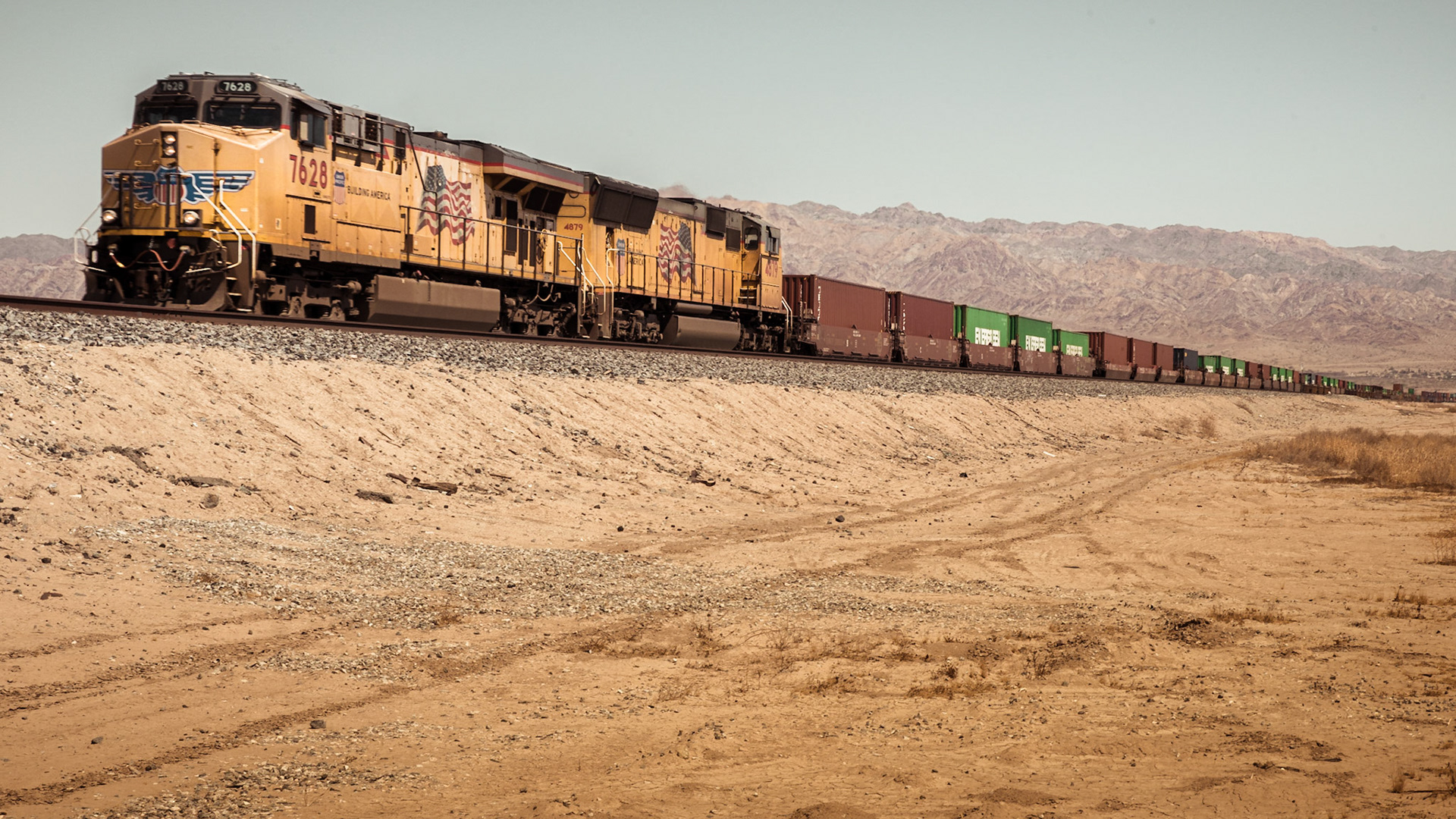
A note from the author
There are various approaches to photography. Mine is, at least as far as I can tell, to react to what I see and capture what attracts my attention. The meaning and story behind my pictures may not reveal themselves until much later, sometimes years later. This is the case with “By-product”. This collection of images was shot in California in 2018, in two very close locations near Los Angeles.
Solton Lake and Slab City are two very different locations: the first one used to be a touristic attraction, with villages, boats, billboards, water games; Slab City is a decomissioned military base abandoned shortly after the end of World War II. Since 1950s, it attracted a varied number of people: among them nomads. Who are nomads in US? People who, for a reason or another, gave up their fixed residence. Frequently these are seasonal workers who travel across the US to follow job opportunities. Some of them periodically move to Slab City to escape the intense cold months of Northern States and to enjoy California’s mild temperatures. They live with very little, in roulottes or campers, amidst dust and away from civilization as we know it: no electricity, running water or any other kind of service.
Solton Lake and Slab City are very similar too: they are both in the middle of the desert, and they both show the dire consequences of prioritizing economic growth over people or nature. Solton Lake was formed from an inflow of water from the Colorado River in 1905. It would have dried up if farmers hadn’t used generous amounts of Colorado river water and let the excess flow into the lake. In the 1950s and ‘60s, the area became a resort destination, and communities grew with hotels and vacation homes. Thirty years later, contamination from industrial agriculture led to the outbreak and spread of diseases. Fishes started dying in large numbers, often blighting the beaches of the sea with their carcasses, and with them disappeared also a large part of the avian populations that depended on that natural ecosystem. In the new millennium, the lake began to shrink as local agriculture used the water more efficiently and less water flowed into the lake. As the lake bed became exposed, the winds sent clouds of toxic dust into nearby communities. What remains are just the dried bones of fishes, some ghost villages with their squatters, and the remains of a once lively community.
Slab City offers shelter, belonging, and perhaps meaning to a community of people who gave up its roots to survive. These people choose to live at the margins of society; as outcasts, they find in each other’s diversity and anonymity a reason to exist, and mutual support. These individuals live to offer their arms to employers. They have no hope for better lives: they have no safety nets, healthcare, unemployment benefits nor the perspective of retiring. Their only way to stay alive is to work.
This collection of images puts in relation, and on the same level, the social and natural misery induced by a society organized around the project of growth at any cost. Such a misery is a by-product of that growth, and therefore a symbol of the darker side of our societal organization. By bringing together images from Solton Lake and Slab City, “By-product” highlights the consequences of a society that prioritizes growth and development above all else.
These images offer a reflection on the impact of human society on both the natural environment and the lives of individuals, and ask to re-evaluate our priorities and the ways in which we interact with the world around us. The hope is that collections, such as this one, remain a memory of the past, not our common future.
